How can a person learn more about the society and history of a country?
Visiting, seeing first-hand and looking around historical and heritage sites is the best way to learn more about Korean society and history.
This was the case for a recent tour to Namhansanseong Fortress arranged by the Korean Culture and Information Service on July 25. The tourists had an educational time looking around the fortress in Gwangju City, Gyeonggi-do Province, which was listed on UNESCO's list of World Heritage sites last year. For many of the visitors, it was their first time to visit the castle. They learned about the history of the fortress, and found it interesting to know more about the Confucianism mindset that is embedded in the architecture and lifestyle of people from Joseon times (1392-1910).
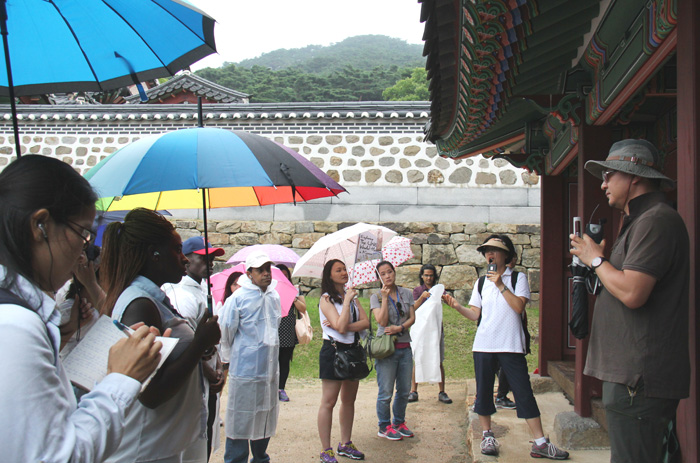
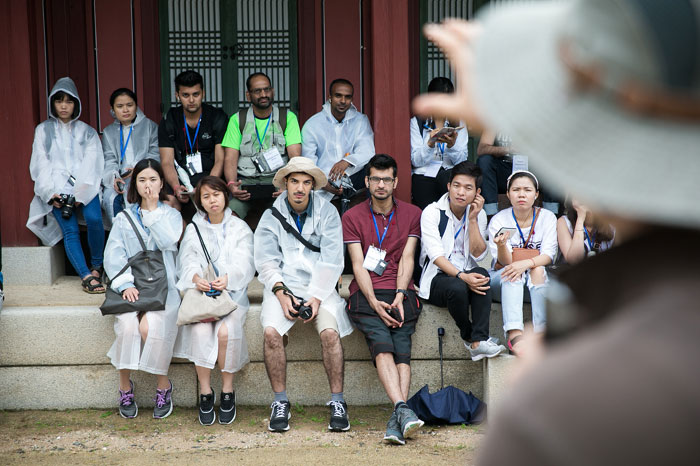
Do Ngoc Luyen, a Vietnamese post-graduate student in Korean language education at Yonsei University, made meticulous notes whenever the guide spoke.
“I'm interested in traditional Korean culture. It's intriguing to know what Koreans had in their minds when they built this fortress in the past," said Luyen.
“In the future, I hope to write an article about Korean culture,” she added.
Agar Omondi, a Kenyan who is studying nuclear engineering at the Korea Advanced Institute of Science & Technology (KAIST), said, “It is amazing that Namhansanseong Fortress was built on a high mountain and has never been conquered by external force.” He also said that it is interesting to learn that one single fortress has so much history.
The visitors appreciated the fact that the fortress was in harmony with the surrounding nature. Pitria Utami, an Indonesian student majoring in tourism management at Kyung Hee University, said, “Nature here is beautiful and the air is clean. The fortress is well-harmonized with nature.” She added that the English guide to the fortress is set up quite well, which helps people to enjoy their visit to the fortress.
Gunay Aliyeva from Azerbaijan, currently studying Korean language at the Hankuk University of Foreign Studies, also said that she likes the mountain air and that the guide's explanations are excellent, helping her to enjoy the overall atmosphere of the tour. .
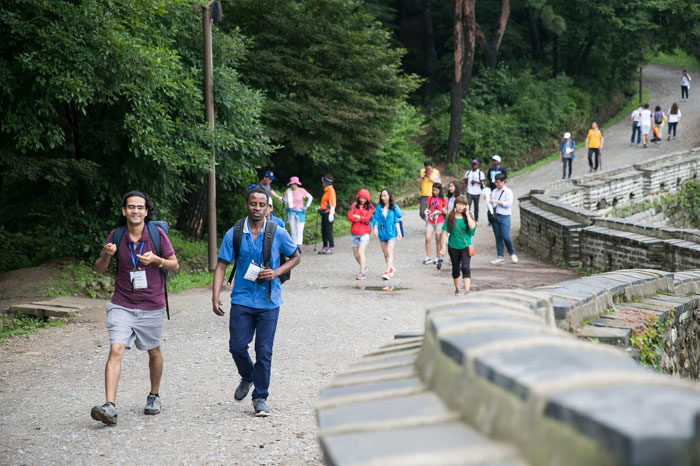
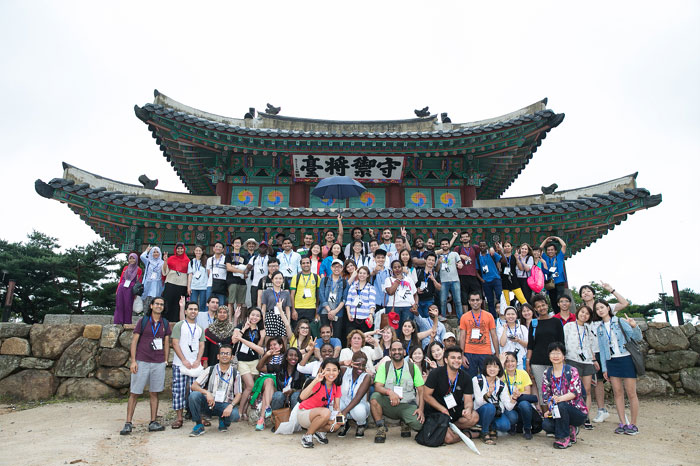
After looking around the fortress, the visitors were able to appreciate the range of porcelain works on display at the Gyeonggi Ceramic Museum. They nodded in agreement when the museum guide explained that only Korea and China ever produced such celadon ceramic porcelain.
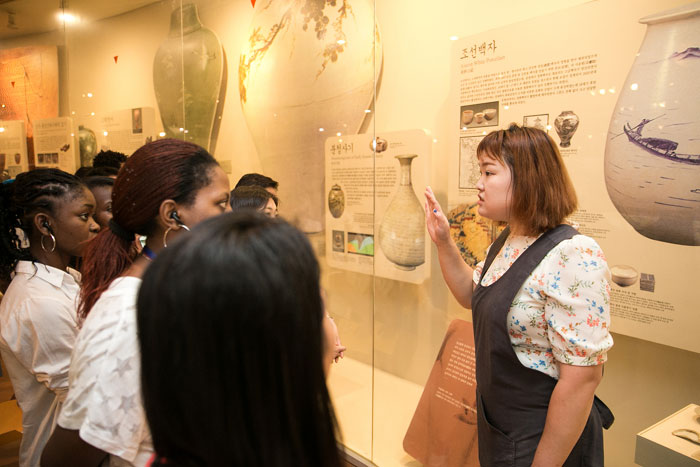
The tour participants also visited the kiln next to the museum as they learned about the process of making beautiful celadon. It includes various processes, including two firings inside the kiln at more than 800 degrees Celsius. As part of the ceramic art experience, they were also able to try painting a bisque-fired mug and to create their own work of art.
Arielle Pukanecz, an English teacher from New York who teaches at an elementary school in Seoul, said that she finds Korea’s ceramics to be quite interesting, as her undergraduate major was anthropology. She also said that she really enjoyed the ceramic painting, even though she is not very artistic.
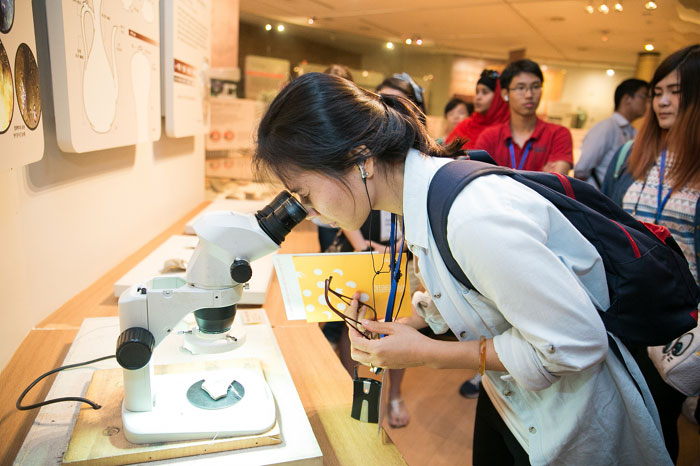
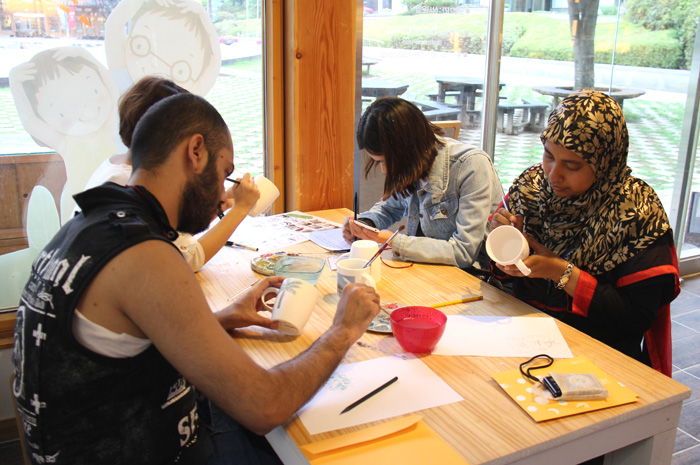
By Yoon Sojung
Photos: Yoon Sojung, KOCIS
Korea.net Staff Writer
arete@korea.kr
Visiting, seeing first-hand and looking around historical and heritage sites is the best way to learn more about Korean society and history.
This was the case for a recent tour to Namhansanseong Fortress arranged by the Korean Culture and Information Service on July 25. The tourists had an educational time looking around the fortress in Gwangju City, Gyeonggi-do Province, which was listed on UNESCO's list of World Heritage sites last year. For many of the visitors, it was their first time to visit the castle. They learned about the history of the fortress, and found it interesting to know more about the Confucianism mindset that is embedded in the architecture and lifestyle of people from Joseon times (1392-1910).


International students participating in a historical tour listen to an explanation about Namhansanseong Fortress.
Do Ngoc Luyen, a Vietnamese post-graduate student in Korean language education at Yonsei University, made meticulous notes whenever the guide spoke.
“I'm interested in traditional Korean culture. It's intriguing to know what Koreans had in their minds when they built this fortress in the past," said Luyen.
“In the future, I hope to write an article about Korean culture,” she added.
Agar Omondi, a Kenyan who is studying nuclear engineering at the Korea Advanced Institute of Science & Technology (KAIST), said, “It is amazing that Namhansanseong Fortress was built on a high mountain and has never been conquered by external force.” He also said that it is interesting to learn that one single fortress has so much history.
The visitors appreciated the fact that the fortress was in harmony with the surrounding nature. Pitria Utami, an Indonesian student majoring in tourism management at Kyung Hee University, said, “Nature here is beautiful and the air is clean. The fortress is well-harmonized with nature.” She added that the English guide to the fortress is set up quite well, which helps people to enjoy their visit to the fortress.
Gunay Aliyeva from Azerbaijan, currently studying Korean language at the Hankuk University of Foreign Studies, also said that she likes the mountain air and that the guide's explanations are excellent, helping her to enjoy the overall atmosphere of the tour. .

Tour participants walk along the fortress walls.

International students pose for a group photo in front of the Sueojangdae military observation deck at Namhansanseong Fortress.
After looking around the fortress, the visitors were able to appreciate the range of porcelain works on display at the Gyeonggi Ceramic Museum. They nodded in agreement when the museum guide explained that only Korea and China ever produced such celadon ceramic porcelain.

Participants listen to an explanation about celadon ceramic porcelain, buncheongsagi (분청사기) and baekja (백자), from a guide at the Gyeonggi Ceramic Museum.
The tour participants also visited the kiln next to the museum as they learned about the process of making beautiful celadon. It includes various processes, including two firings inside the kiln at more than 800 degrees Celsius. As part of the ceramic art experience, they were also able to try painting a bisque-fired mug and to create their own work of art.
Arielle Pukanecz, an English teacher from New York who teaches at an elementary school in Seoul, said that she finds Korea’s ceramics to be quite interesting, as her undergraduate major was anthropology. She also said that she really enjoyed the ceramic painting, even though she is not very artistic.

A student looks closely through a microscope at the surface of a piece of porcelain.

International students paint their bisque-fired mugs while learning about Korea's ceramic traditions at the Gyeonggi Ceramic Museum.
By Yoon Sojung
Photos: Yoon Sojung, KOCIS
Korea.net Staff Writer
arete@korea.kr